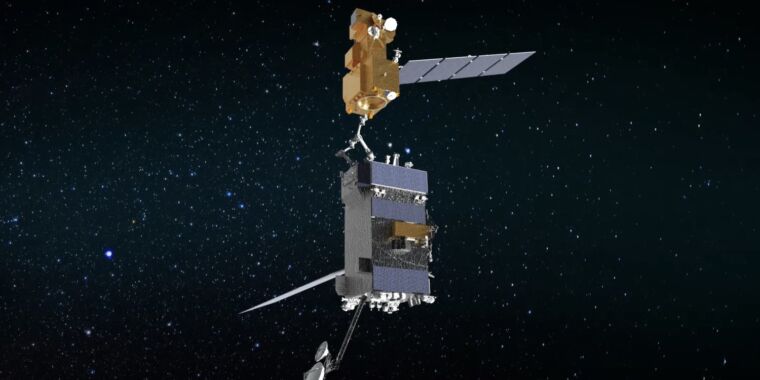NASA Cancels OSAM-1 Mission
NASA recently made the difficult decision to cancel the On-orbit Servicing, Assembly, and Manufacturing 1 mission, known as OSAM-1, due to a variety of challenges. The project, which aimed to demonstrate robotic satellite servicing technology in orbit, has faced significant setbacks including technical issues, cost overruns, and delays.
Origins of OSAM-1
The original scope of the mission, initiated in 2016, focused solely on a refueling demonstration. However, in 2020, officials expanded the project to include an in-orbit assembly objective. This addition introduced the Space Infrastructure Dexterous Robot (SPIDER), a sophisticated 16-foot robotic arm designed to construct a Ka-band communications antenna by assembling seven structural elements.
The increased complexity of the mission, now renamed OSAM-1, required additional funding. NASA’s inspector general highlighted significant budget increases and delays in a report, revealing the extensive financial resources allocated to the project over the years.
Challenges and Concerns
The cancelation of OSAM-1 stems from its escalating costs and ongoing technical difficulties. Despite initial projections of a launch in 2020, the mission encountered numerous obstacles leading to continuous delays and budget overruns. A recent estimate indicated that the total project could escalate to $2.35 billion, far exceeding the original budget.
Moreover, changes in the satellite servicing market have influenced NASA’s decision. With the emergence of commercial satellite servicing technologies, the focus has shifted towards extending satellite life through innovative methods. Alternative approaches, such as Northrop Grumman’s Mission Extension Vehicle, have gained prominence, offering new ways to enhance satellite capabilities without the need for traditional refueling methods.
As the satellite industry evolves, NASA’s decision to cancel OSAM-1 reflects a strategic realignment with emerging technologies and market trends. While the mission’s termination represents a significant setback, it also underscores the adaptability and forward-thinking approach necessary to navigate a rapidly changing space landscape.
Image/Photo credit: source url






